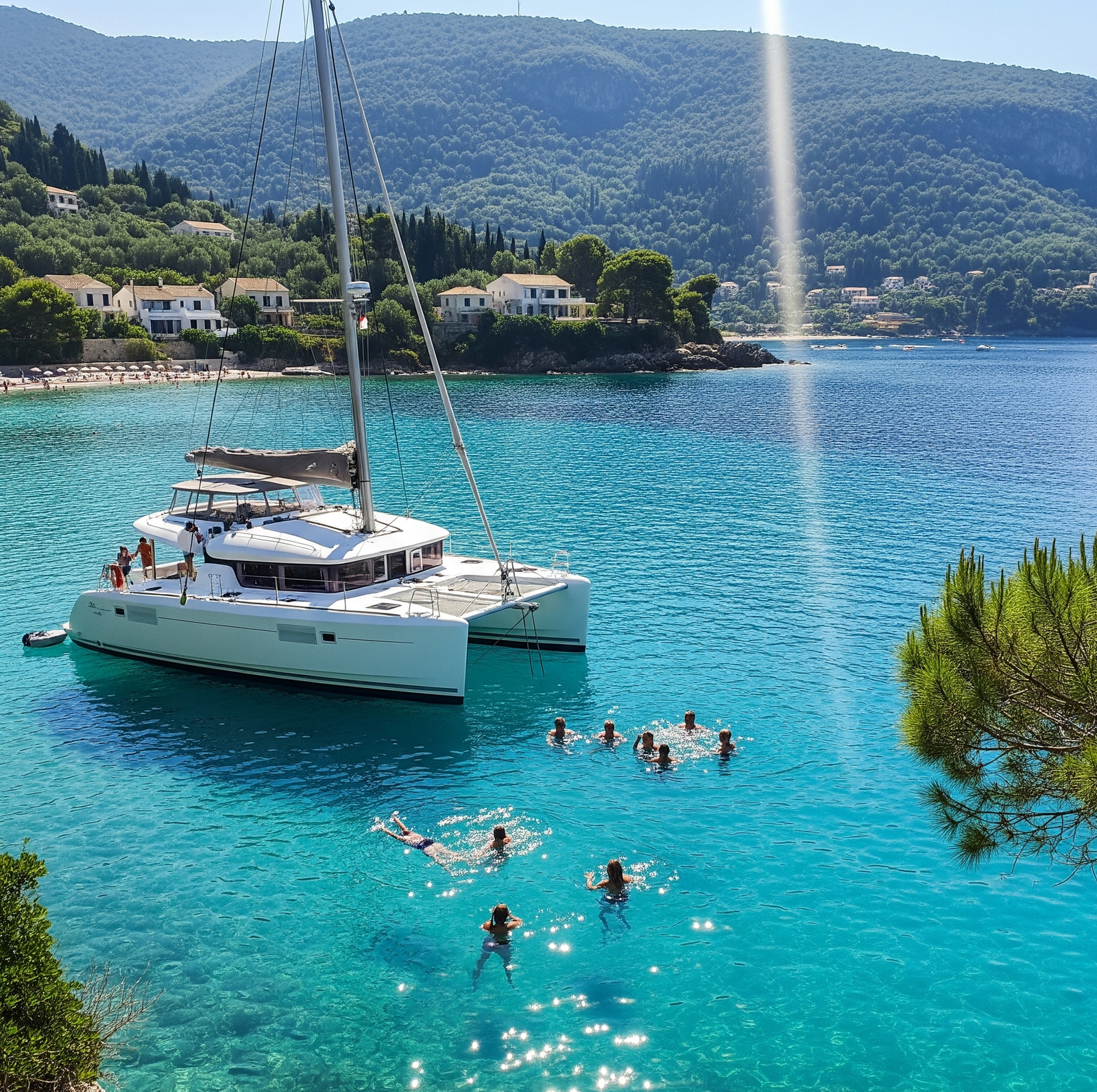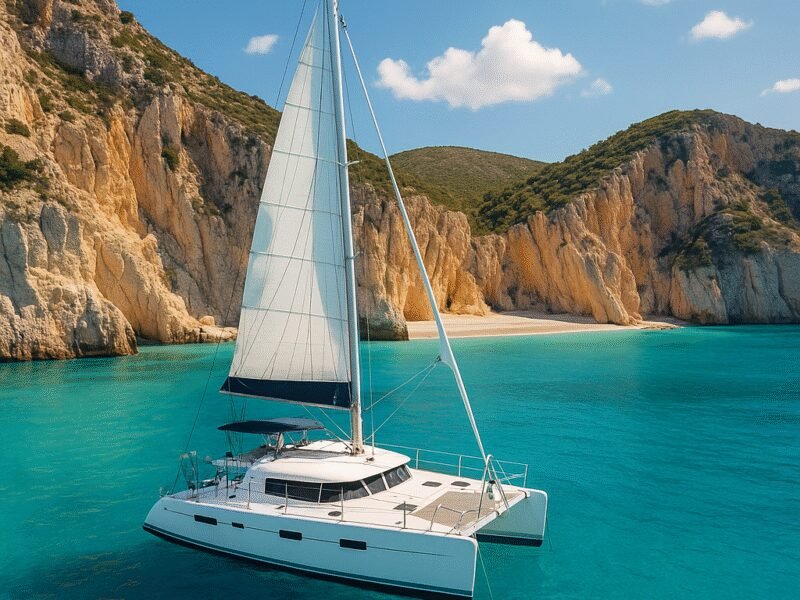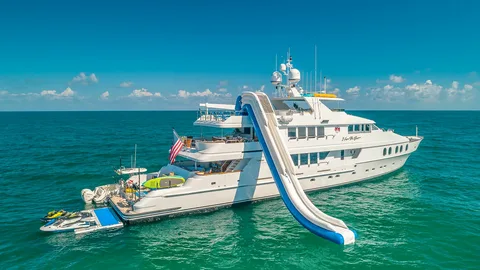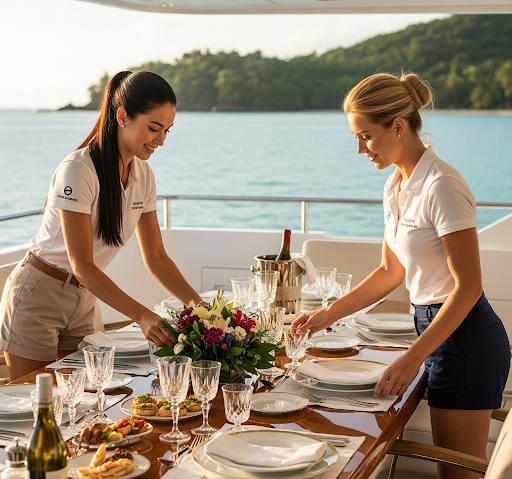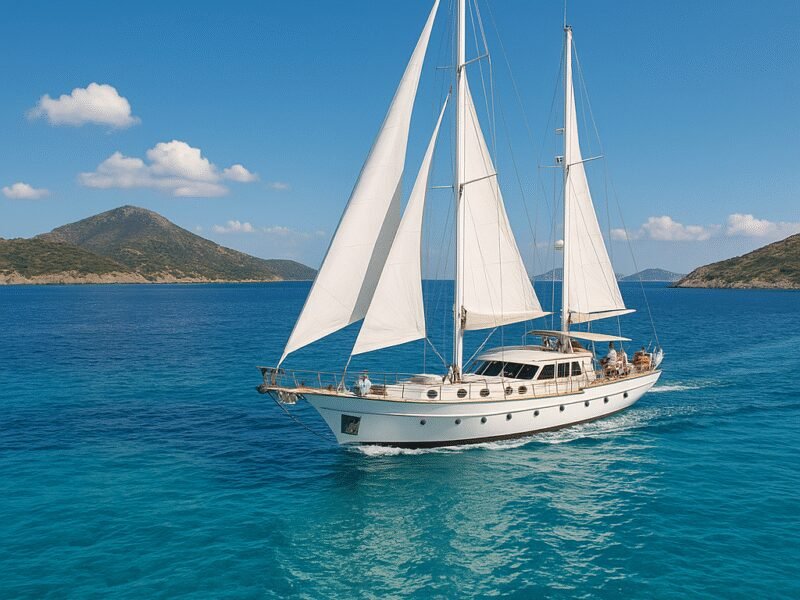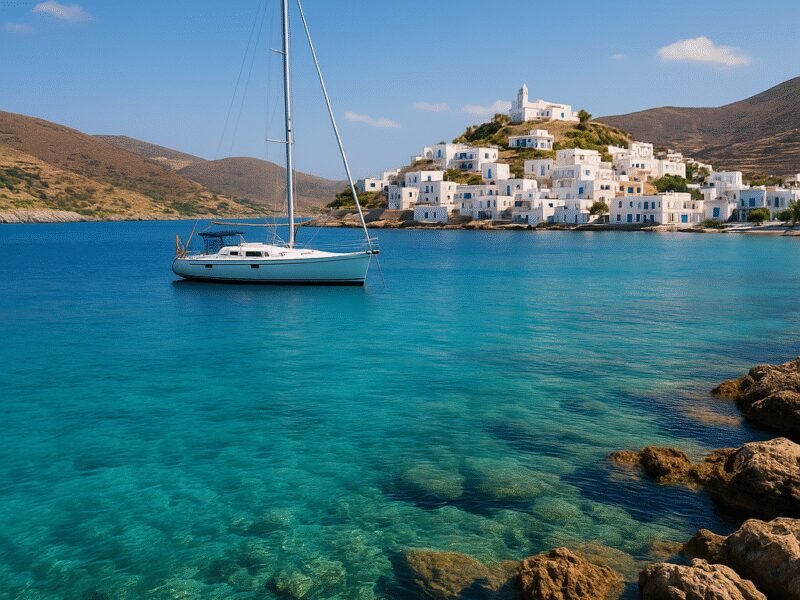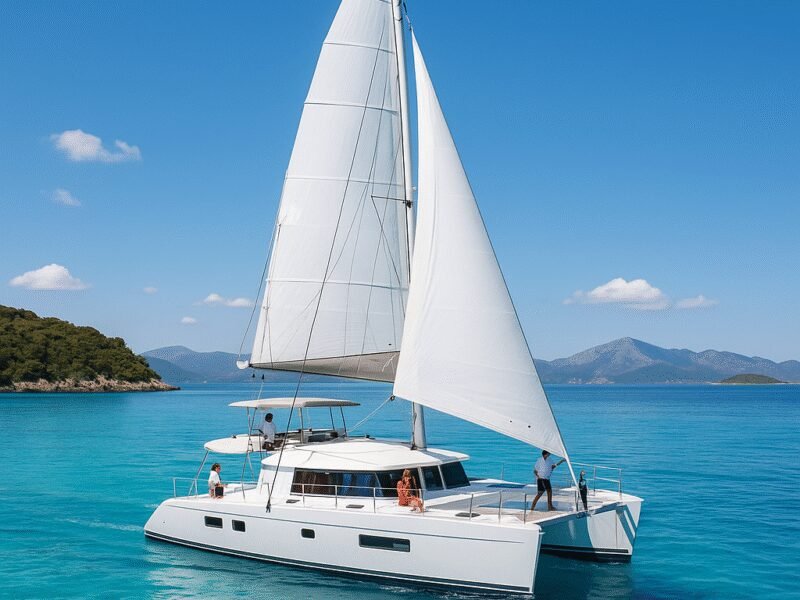- +1 123 456 0606
- info@PrimaCharter.com
- Mon - Fri 09:00-17:00
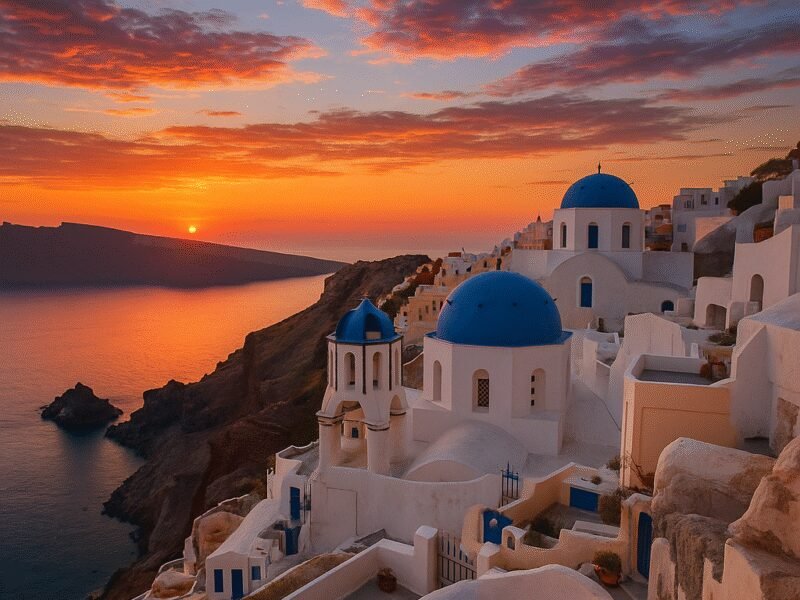

Top 10 Photo Spots in Greece from a Catamaran
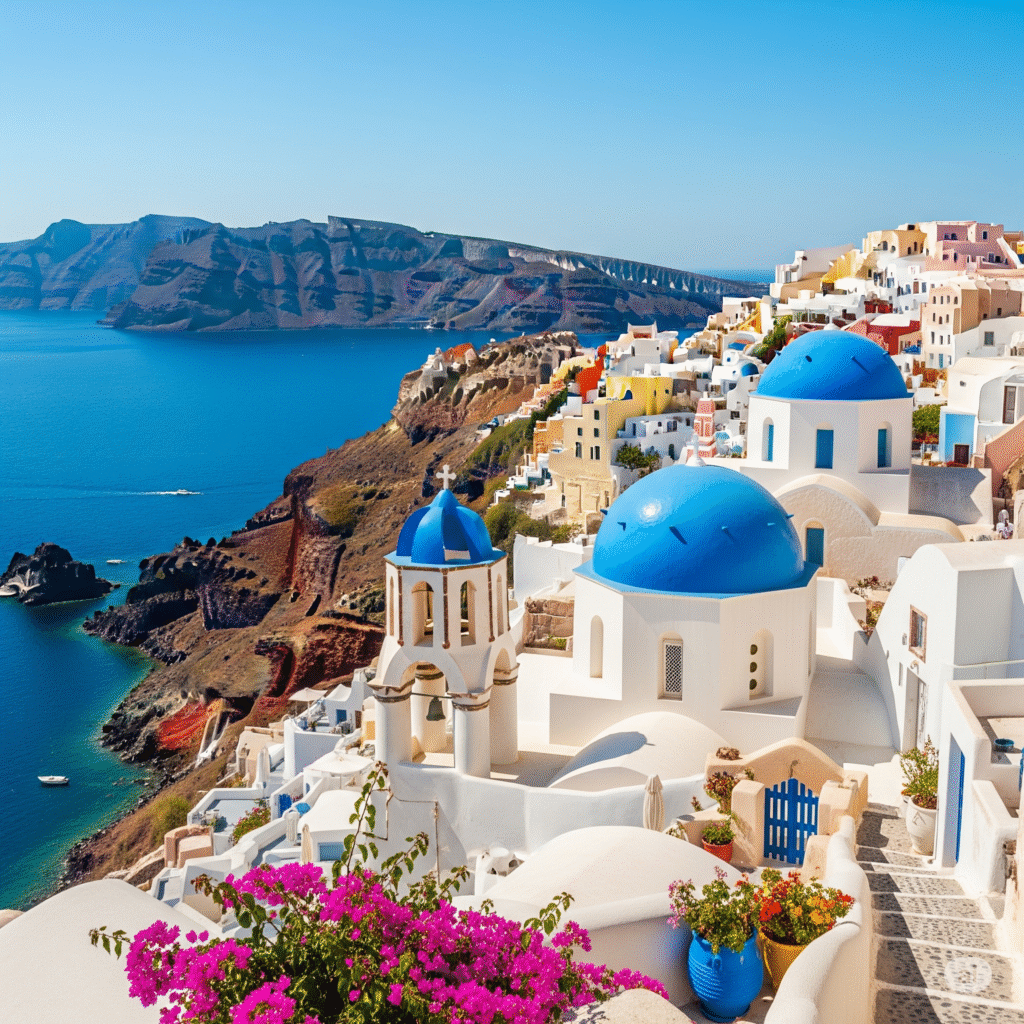
Greece, a country renowned for its stunning landscapes and crystal-clear waters, presents an unparalleled opportunity for photography enthusiasts and casual travelers alike. With its rich history, vibrant culture, and breathtaking natural beauty, Greece offers a diverse range of subjects for photographers to explore. From the majestic cliffs of Santorini to the serene beaches of Zakynthos, the beauty of Greece is best appreciated from the water. A catamaran provides a unique vantage point for capturing the essence of these breathtaking locations. This guide will explore the top 10 photo spots in Greece that you can access by catamaran, ensuring your yacht holiday is filled with unforgettable memories and stunning photographs. Whether you are a seasoned photographer or an enthusiastic novice, these locations will inspire you to capture the magic of Greece from a new perspective.
1. The Cliffs of Santorini
The iconic cliffs of Santorini are a must-visit for any photography lover. As you navigate the caldera, breathtaking views unfold, showcasing the island’s famous white-washed buildings perched atop steep cliffs overlooking the deep blue Aegean Sea. The best time to capture these views is during the golden hour when the sun sets, casting a warm glow over the landscape. The interplay of light and shadow creates a mesmerizing effect, making your photographs truly enchanting. You might even catch the famous blue domes of Oia standing out against the vibrant sky, an image sure to impress anyone who views it.
Anchoring in strategic spots allows you to photograph the unique architecture against the backdrop of the deep blue Aegean Sea. This setting offers a rich tapestry of colors, especially as the sun dips below the horizon. The contrast of colors during sunset creates a picturesque scene that is both romantic and dramatic. You may also want to experiment with different angles; capturing the cliffs from various perspectives can yield stunning results that highlight the island’s dramatic topography. Furthermore, consider using the reflections in the water to enhance the depth of your compositions, creating layers that draw the viewer in.
2. The Blue Caves of Zakynthos
n
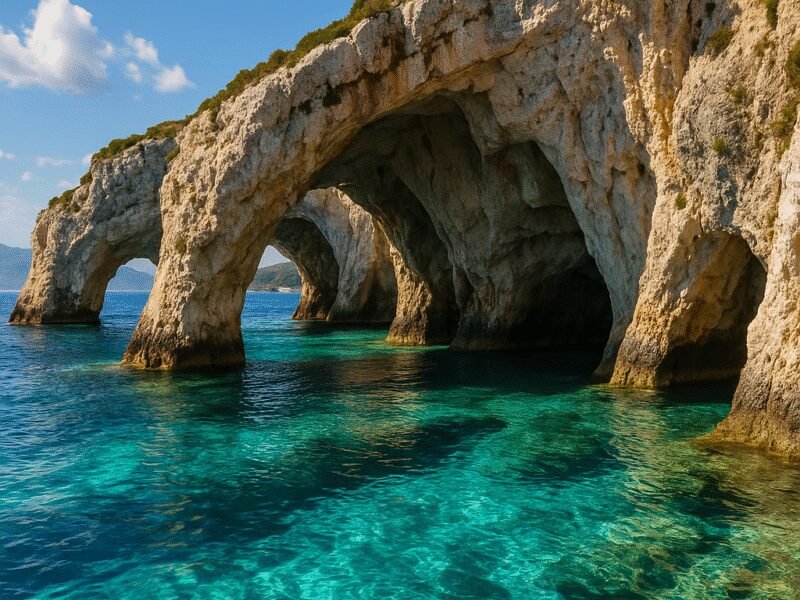
n
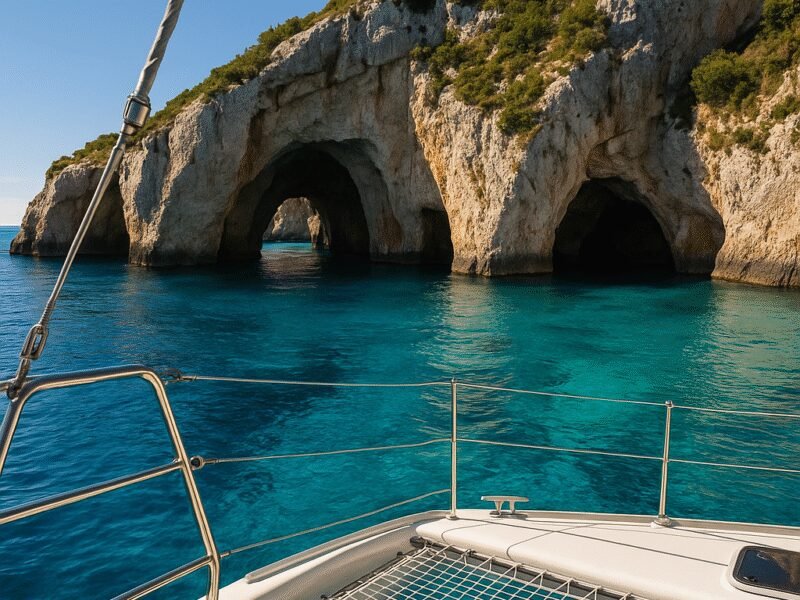
n
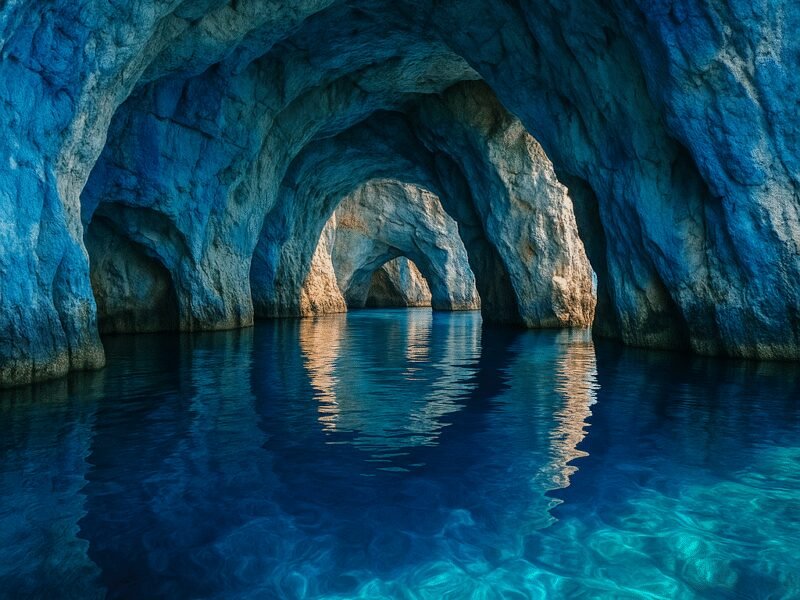
Zakynthos is home to the mesmerizing Blue Caves, a natural wonder that captivates visitors with their ethereal beauty. These caves are best explored from a catamaran, allowing you to access their stunning entrances and capture the vibrant blue hues of the water inside. Early morning is the ideal time for photography, as the light filters through the openings, illuminating the water in a magical way. This creates a stunning effect, where the light dances across the water, inviting you to capture the moment. The unique rock formations surrounding the caves add to the allure, providing ample opportunities for dramatic compositions.
Ensure your camera settings are adjusted to capture the rich colors without losing detail. The reflections off the water can create stunning images that highlight the beauty of this unique geological formation. Don’t hesitate to use a wide-angle lens to encompass the entire cave’s entrance, capturing both the rock formations and the shimmering water within. Additionally, consider shooting both in color and black and white to explore the contrasts and textures of the cave walls, revealing the hidden details of this natural marvel.
3. Navagio Beach (Shipwreck Beach)
n
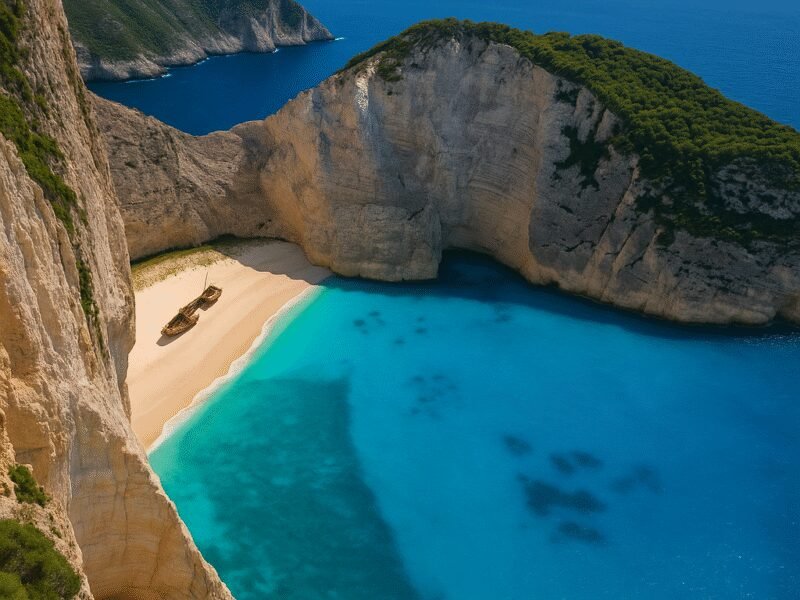
n
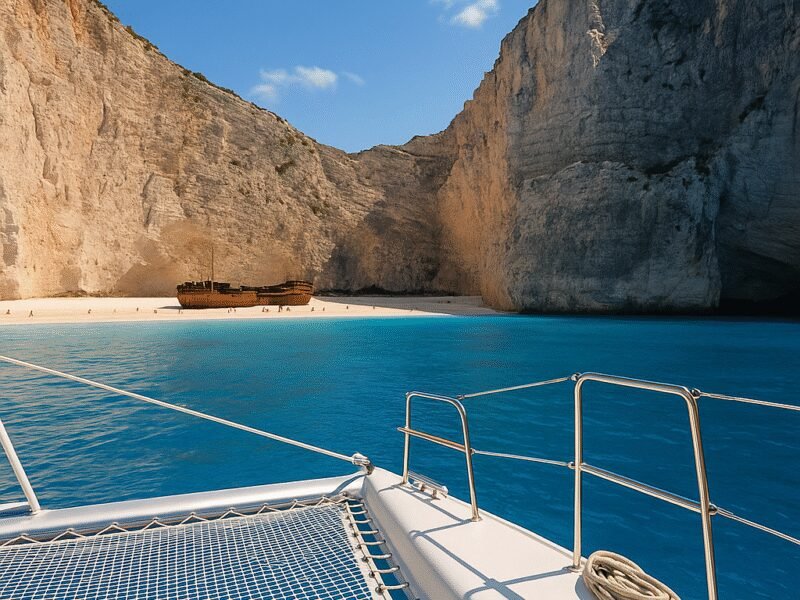
n
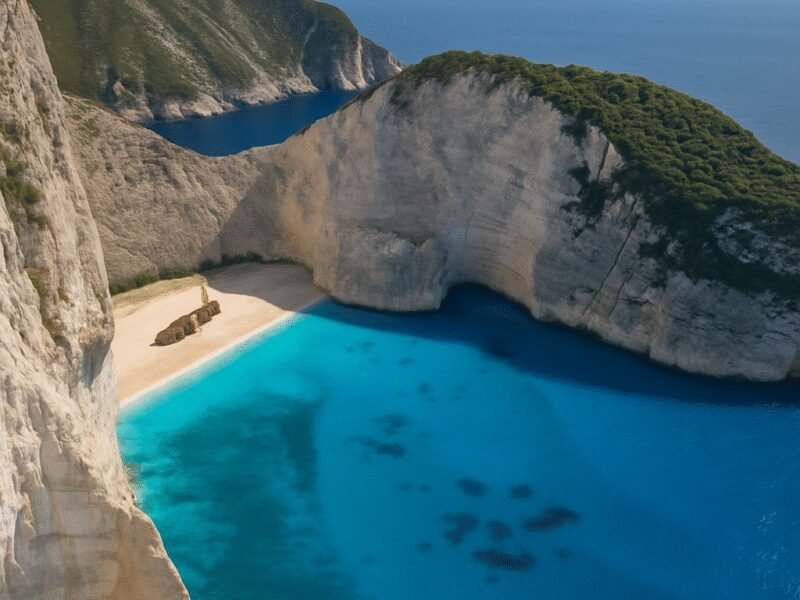
No trip to Zakynthos is complete without visiting Navagio Beach. This secluded cove, famous for its shipwreck and towering cliffs, offers dramatic photo opportunities. The turquoise waters contrasted with the white sand create a striking visual that is hard to forget. A catamaran allows you to approach the beach from the sea, offering a unique perspective that most visitors miss. From the water, you can capture the full scale of the cliffs and the wreck, which adds a layer of intrigue to your photographs. This perspective enhances the sense of isolation and beauty that makes Navagio Beach so iconic. The beach’s remote location adds to its mystique, making it a favorite spot for photographers seeking to capture untouched beauty.
Consider taking aerial shots if your catamaran has a drone onboard. These images can capture the entire cove, showcasing its stunning beauty from above. The interplay of the shipwreck, sandy beach, and surrounding cliffs yields a photograph that tells a story, encapsulating both nature’s beauty and human history. The combination of natural and man-made elements creates a compelling narrative in your images, inviting viewers to imagine the stories behind the shipwreck and the beauty surrounding it.
4. The Islands of the Cyclades
The Cyclades, a group of islands known for their picturesque beauty, offer numerous photo opportunities. Islands such as Mykonos and Naxos boast charming villages with narrow streets, vibrant bougainvillea, and crystal-clear waters. A catamaran allows you to hop between islands, capturing the diverse landscapes and cultural heritage of each location. For instance, Mykonos is famous for its windmills and vibrant nightlife, while Naxos features ancient ruins and lush, fertile landscapes. Each island has a distinct character, adding to the variety of your photography portfolio.
Photographing local life during your visit can add a personal touch to your collection. Consider capturing candid moments of fishermen at work or local markets bustling with activity. Engaging with locals can also yield unique perspectives and stories that enrich your photographic journey. For example, you might photograph a local artist painting a seascape, or a family enjoying a meal at a seaside taverna. These moments of daily life can create emotional connections in your photography, allowing viewers to feel the warmth and vibrancy of Greek culture.
5. Ancient Ruins of Delos
The island of Delos is steeped in history and mythology. As a UNESCO World Heritage site, it offers a glimpse into ancient Greek civilization. Arriving by catamaran allows you to approach the island from the sea, where you can photograph the ruins against the backdrop of the Aegean Sea. The juxtaposition of ancient stone structures with the vibrant blue sea creates stunning compositions that resonate with history. The ruins of temples, theaters, and houses tell a story of a once-thriving city that was a major religious center in ancient times, making it a treasure trove for history buffs and photographers alike.
Guided tours are available, providing insights into the history of the site. Use these opportunities to capture both wide shots of the ruins and detailed close-ups of architectural features. The intricate designs of ancient columns and sculptures can make for compelling photographs that highlight the craftsmanship of the time. Seek out interesting textures and angles—photographing columns from below can emphasize their grandeur, while capturing worn stone can evoke the passage of time and the stories these ruins hold.
6. The Secluded Beaches of Crete
Crete, the largest Greek island, is home to numerous secluded beaches that are best accessed by catamaran. From the pink sands of Elafonissi to the pristine waters of Balos Lagoon, each offers unique photographic opportunities. Early morning or late afternoon is the best time for capturing these beaches in their most beautiful light, as the sun casts a golden hue that enhances the natural beauty of the coastline. The gentle waves and soft sands serve as perfect subjects for both landscape and portrait photography, allowing you to capture the essence of relaxation and tranquility.
Utilize your catamaran to anchor off the coast, allowing you to photograph the beaches from the water. This perspective can highlight the stunning coastline and lush landscapes surrounding each beach. The clarity of the water creates a beautiful contrast with the sandy shores, making for breathtaking images that capture the essence of tranquility. Don’t forget to experiment with long exposures to create smooth water effects, which can add a dreamlike quality to your beach photographs. This technique can transform an ordinary scene into something extraordinary, evoking a sense of calm and serenity.
7. The Volcanic Landscape of Nisyros
Nisyros, a volcanic island, presents a unique landscape for photographers. The stark contrasts of the volcanic rock against the bright blue sky provide a dramatic backdrop. Approaching by catamaran allows you to capture the island’s rugged beauty from the water, showcasing the stark cliffs and the serene sea. The interplay between the volcanic formations and the surrounding water creates a dynamic composition. Photographers can experiment with the colors and textures of the rock, which can vary dramatically depending on the time of day.
Photographing the island during the midday sun can create striking shadows and highlights, showcasing the texture of the volcanic terrain. Don’t miss the opportunity to explore the caldera and capture the steam vents up close; these geological features can add an otherworldly element to your photographs. Additionally, consider using a telephoto lens to capture distant landscapes and wildlife, providing a different perspective on this unique island, and allowing you to encapsulate the dramatic contrast of life thriving in such a rugged environment.
8. Sunset Views from Oia
Oia, located on the northern tip of Santorini, is famous for its breathtaking sunsets. While many flock to this spot on land, arriving by catamaran allows you to capture the sunset from a unique angle. The vibrant colors reflecting off the water create an unforgettable photographic experience. Timing is crucial; ensure you plan your catamaran cruise to coincide with the sunset, allowing you to set up your shots in advance. The way the sun dips below the horizon, painting the sky in shades of pink, orange, and purple, is a sight that photographers dream of, creating a magical atmosphere that enhances the beauty of the moment.
The silhouettes of the cliffs against the colorful sky can create stunning images. Experiment with long exposure techniques to capture the smoothness of the water, adding an ethereal quality to your sunset images. Oia’s iconic blue-domed churches can also serve as beautiful foreground subjects that enhance the visual impact of your photos. Capture the interplay between the natural beauty of the sunset and the architectural charm of Oia for a truly captivating photograph that tells the story of a day spent in paradise.
9. The Charming Village of Hydra
Hydra, known for its preserved architecture and absence of motor vehicles, offers a picturesque setting for photography. Arriving by catamaran allows you to capture the village from the sea, showcasing its charming harbor and stone buildings. The best time for photography is during the golden hour when the soft light enhances the beauty of the town. The reflections of the buildings in the harbor water create an enchanting atmosphere that is perfect for both photos and memories. You might also want to photograph the iconic donkeys that serve as the island’s primary mode of transport, adding a touch of local culture to your images.
Take the time to wander the narrow streets, capturing candid moments of local life, as well as the stunning views from the hilltops overlooking the village. Hydra’s unique character, adorned with colorful flowers and historical architecture, provides endless inspiration for photographers looking to capture the essence of Greek island life. Look for details such as vibrant doorways, intricate ironwork, and charming balconies to add depth and interest to your photographic collection. Each corner of Hydra offers a new story waiting to be captured, making it a delightful experience for any photographer.
10. The Wild Beauty of Kythira
Kythira, an island less traveled, offers breathtaking landscapes and diverse photography opportunities. From rugged cliffs to lush greenery, the island’s natural beauty is captivating. Approaching by catamaran provides access to hidden coves and secluded beaches that are perfect for photography. The untouched nature of Kythira presents a chance to capture the raw beauty of Greece away from the more touristy spots. The island’s diverse ecosystems provide a rich palette for nature photography, from coastal views to mountainous landscapes, making it a haven for those seeking to document the unspoiled beauty of the Greek Isles.
Consider capturing the island’s diverse flora and fauna, as well as the stunning coastal views. The tranquility of Kythira allows for reflective photography, capturing the essence of untouched nature. Aim to photograph the wildflowers that bloom in spring, adding splashes of color to your landscape shots, and don’t forget to document the breathtaking sunsets that Kythira is known for. With fewer crowds, you can take your time to compose the perfect shot without feeling rushed, allowing you to connect more deeply with the environment you are photographing.
Q&A Section
As you prepare for your photographic journey through Greece, here are some common questions and answers to help you make the most of your catamaran experience.
What equipment should I bring for photography on a catamaran?
It’s essential to pack lightweight gear, including a DSLR or mirrorless camera, a variety of lenses, and a sturdy tripod. A waterproof bag is also recommended to protect your equipment from splashes. Additionally, consider bringing extra batteries and memory cards, as you’ll likely be taking a lot of photos! Having a lens cleaning cloth handy is also a good idea, as saltwater spray can affect your lens clarity. Remember, the right equipment can make a significant difference in capturing those perfect moments.
What is the best time of year to take photos in Greece?
Late spring and early autumn are ideal for photography in Greece. The weather is pleasant, and the light is perfect for capturing vibrant colors without harsh contrasts. These seasons also tend to have fewer tourists, allowing for more serene photography experiences. Additionally, the blooming flora in spring and the warm hues of autumn can create spectacular backdrops for your images. Planning your trip during these times can greatly enhance your overall photography experience.
Can I take drone photography from a catamaran?
Yes, many catamarans permit drone use, but it’s crucial to adhere to local regulations. Always check the rules prior to flying to avoid fines. Using a drone can offer a unique perspective of the stunning landscapes, so make sure to take advantage of this technology responsibly. Capture sweeping aerial views of the coastline, adding another dimension to your photography portfolio. Aerial photography can unveil aspects of the landscape that are difficult to see from the ground, enriching your collection of images.
How can I ensure the best lighting for my photos?
Photographing during the golden hour, shortly after sunrise or before sunset, provides the best lighting for your photos. Midday sun can be harsh, so plan your shots accordingly. Experimenting with backlighting can also create dramatic effects, especially with subjects like flowers or silhouettes. Additionally, try to scout locations ahead of time to determine the best angles and lighting conditions for your shoot. Understanding light will enhance the quality of your images and help convey the mood you want to capture.
Conclusion
Exploring Greece from the vantage point of a catamaran opens up a world of photographic opportunities. From the iconic cliffs of Santorini to the secluded beaches of Crete, each location offers a unique perspective that captures the essence of this beautiful country. By planning your itinerary thoughtfully and utilizing the tips provided, you can ensure that your yacht holiday is not only relaxing but also filled with stunning photography. Don’t forget to take the time to enjoy the surroundings; sometimes, the best memories are made when you aren’t behind the camera.
As you embark on this photographic adventure, remember the importance of timing, perspective, and preparation. Each of the top 10 photo spots in Greece provides a chance to create lasting memories and breathtaking images. For further reading on catamaran charters and preparing for your perfect yacht vacation, visit our website, where we offer detailed guides and tips for travelers.
For an unforgettable experience sailing the beautiful waters of Greece, consider booking a luxury crewed catamaran charter. Explore the beauty of these islands while indulging in comfort and style. Discover more about your perfect charter vacation at www.primacharter.com/perfect-charter-vacation/. The journey awaits, filled with stunning vistas and the joy of capturing Greece’s hidden gems.
